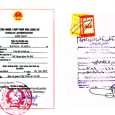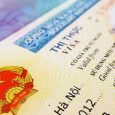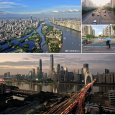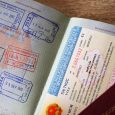Are you planning a trip to Vietnam? If so, you may need to apply for a visa. One popular way to obtain a visa for Vietnam is through the Visa on Arrival (VOA) program. In this comprehensive guide, we’ll cover everything you need to know about Vietnam Visa on Arrival, including how to apply, pros and cons, alternatives, and more.
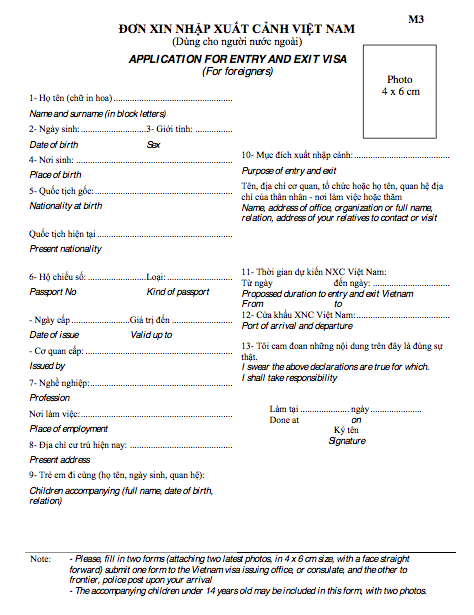
What is Vietnam Visa on Arrival?
Vietnam Visa on Arrival is a process that allows travelers to apply for a visa online and receive it upon arrival at one of Vietnam’s international airports. This program is only available for air travel; if you plan on entering Vietnam by land or sea, you’ll need to obtain a traditional visa in advance.
To apply for Vietnam Visa on Arrival, you’ll need to submit an online application and pay a fee. Once approved, you’ll receive a Visa Approval Letter via email. You’ll need to print this letter and bring it with you to the airport, along with your passport and any required fees. Once you arrive in Vietnam, you’ll present these documents to the immigration officer, who will stamp your passport with the appropriate visa.
How to Apply for Vietnam Visa on Arrival
Applying for Vietnam Visa on Arrival is a straightforward process, but there are a few things you need to keep in mind. Here’s a step-by-step guide:
- Visit a reputable visa service provider website that offers Vietnam Visa on Arrival services.
- Fill out the online application form, providing all the necessary information and supporting documents.
- Pay the visa processing fee using a valid credit card or PayPal account.
- Wait for the Visa Approval Letter to be emailed to you. This typically takes 2-3 business days, but can take up to 7 business days during peak travel seasons.
- Print the Visa Approval Letter and bring it with you to the airport, along with your passport and any required fees.
- Upon arrival in Vietnam, present your documents to the immigration officer and receive your visa.
Pros and Cons of Vietnam Visa on Arrival
Like any travel document process, Vietnam Visa on Arrival has its advantages and disadvantages. Here are some pros and cons to consider:
Pros
- Convenient: You can apply for Vietnam Visa on Arrival from anywhere with an internet connection, without having to visit a physical embassy or consulate.
- Cost-effective: Vietnam Visa on Arrival is typically less expensive than obtaining a traditional visa through an embassy or consulate.
- Time-saving: With Vietnam Visa on Arrival, you don’t have to wait in long lines at the embassy or consulate.
- Flexibility: You can apply for Vietnam Visa on Arrival up to 6 months before your intended travel date, and can also choose the length of your stay (up to 90 days).
Cons
- Only available for air travel: Vietnam Visa on Arrival is only valid for travelers entering Vietnam by air.
- Uncertainty: While it’s rare, there is a chance that you may be denied entry into Vietnam even if you have a Visa Approval Letter.
- Additional fees: In addition to the visa processing fee, you may also need to pay stamping fees upon arrival in Vietnam.
Alternatives to Vietnam Visa on Arrival
If Vietnam Visa on Arrival isn’t the right option for you, there are several alternatives to consider:
- Traditional visa: If you plan on entering Vietnam via land or sea, or if you prefer to obtain a visa in advance, you can apply for a traditional visa through a Vietnamese embassy or consulate.
- E-visa: Vietnam also offers an e-visa program, which allows travelers to apply for a visa online and receive it electronically. This program is available for travelers entering Vietnam via air, land, or sea.
Tips for Applying for Vietnam Visa on Arrival
Here are a few tips to make the Vietnam Visa on Arrival process as smooth as possible:
- Use a reputable visa service provider: There are many websites that offer Vietnam Visa on Arrival services, but not all of them are legitimate. Do your research and choose a reputable provider.
- Double-check your information: Make sure all the information you provide on your application is accurate and matches the information on your passport.
- Print multiple copies: In case you lose one copy of your Visa Approval Letter, it’s a good idea to print out multiple copies and keep them in different places.
- Bring cash: You may need to pay stamping fees upon arrival in Vietnam, so make sure to bring some cash with you.
The Best Websites for Vietnam Visa on Arrival
Here are some of the best websites that offer Vietnam Visa on Arrival services:
- Vietnam Visa Pro
- Vietnam Visa Corp
- Vietnam Visa Express
- My Vietnam Visa
Conclusion
Vietnam Visa on Arrival is a popular option for travelers who want to visit Vietnam without having to obtain a traditional visa in advance. By following the steps outlined in this guide and considering the pros and consof VOA, you can decide if this is the right option for your travel plans.
Remember to double-check all information and use a reputable visa service provider to ensure a smooth and hassle-free process. With a valid visa in hand, you can enjoy all that Vietnam has to offer, from stunning landscapes to bustling cities and delicious cuisine.
FAQs About Vietnam Visa on Arrival
- Is Vietnam Visa on Arrival available for all nationalities? Yes, Vietnam Visa on Arrival is available for citizens of most countries. However, you should check with your chosen visa service provider to confirm eligibility.
- Can I extend my stay in Vietnam with a Visa on Arrival? Yes, it is possible to extend your stay in Vietnam by applying for a visa extension through the Vietnamese immigration department.
- What are the stamping fees for Vietnam Visa on Arrival? The stamping fee for Vietnam Visa on Arrival varies depending on the length of your stay, but typically ranges from $25 to $50 USD.
- How long does it take to receive a Visa Approval Letter for Vietnam Visa on Arrival? The processing time for a Visa Approval Letter typically takes 2-3 business days, but can take up to 7 business days during peak travel seasons.
- Can I use Vietnam Visa on Arrival to enter Vietnam by sea or land? No, Vietnam Visa on Arrival is only valid for travelers entering Vietnam by air. If you plan on entering Vietnam by sea or land, you’ll need to obtain a traditional visa in advance.
